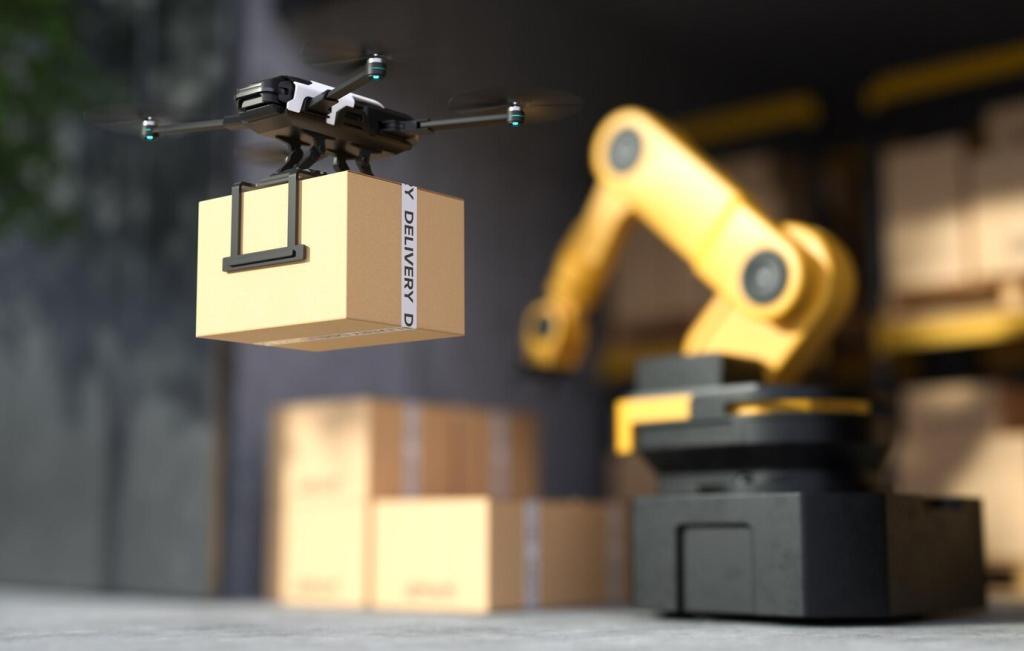Chosen theme: Implementing AI in Warehouse Inventory Systems. Welcome to a practical, uplifting guide for turning data, sensors, and human expertise into a calmer, smarter warehouse. Expect clear steps, real stories, and useful prompts—comment, subscribe, and share your own lessons so we can learn and iterate together.
Mapping the AI Journey for Your Warehouse
Start with outcomes your people feel every day: faster counts, fewer stockouts, calmer shifts, safer aisles. Name constraints honestly—budget, bandwidth, legacy systems, risk tolerance, labor availability, and data quality. Clear guardrails make creative solutions easier. What is your top constraint today? Tell us in the comments so others can compare approaches.
Mapping the AI Journey for Your Warehouse
Prioritize problems with clear value and workable data: cycle counting, replenishment timing, slotting optimization, anomaly detection, and dock scheduling. Score each by effort, accuracy needs, and integration complexity. Quick wins build trust for the bigger ideas. Which use case would you start with first? Share your pick and why, then subscribe for follow-ups.



Computer Vision, Sensors, and Real-Time Inventory
Forklift cameras and aisle-mounted sensors can read labels and estimate quantities while operators work. Good lighting, reflective tape management, and calibration routines matter as much as model accuracy. Always pair alerts with safe workflows. Want a practical checklist for setup and testing? Ask in the comments, and we will share a field-tested template.
Computer Vision, Sensors, and Real-Time Inventory
Smart shelves detect weight changes, RFID portals confirm pallet identities, and low-energy beacons guide workers during replenishment. Luis, a veteran forklift operator, joked that the quiet beep from a smart shelf felt like a teammate whispering, “Right bay, wrong level.” Have you tried similar tech? Tell us what surprised your team most.
Computer Vision, Sensors, and Real-Time Inventory
Edge devices respond quickly and work during flaky connectivity; cloud models scale flexibly and centralize updates. Many teams blend both, pushing lightweight checks to the edge and heavy models to the cloud. Orchestrate updates safely and monitor performance drift. Subscribe for our hybrid reference architecture and deployment playbook.
Forecasting and Intelligent Replenishment
Short-term spikes and long-term seasonality
Blend demand signals like promotions, weather, supplier reliability, and regional events with your pick patterns and receiving cadence. Use fresh data and keep models humble, retraining frequently. Ask supervisors to flag unusual weeks as context for later analysis. Which signals matter most in your operation? Share your shortlist and why.
Dynamic safety stock and reorder points
Move from fixed thresholds to adaptive buffers that reflect variability in demand and lead times. Simulate service levels and backorders before changing policies. Keep operators in the loop with transparent explanations. What rule-of-thumb do you use today? Post it below, and we will suggest ways to test smarter alternatives.
Closed-loop replenishment execution
Translate recommendations into tasks with priorities, routes, and confirmations. Allow human overrides with reasons, then learn from those exceptions. Keep auditable trails for every decision so trust grows over time. Want our task-template starter pack? Subscribe and leave a note about your WMS, and we will tailor examples.
People, Change, and Responsible AI
Upskill, involve, and celebrate associates
Offer short, hands-on sessions, shadow days, and lunch-and-learns led by peers. Invite feedback on alert wording and handheld workflows. Celebrate saved steps, safer moves, and clever ideas in team huddles. How do you spotlight frontline wins? Share your kudos ritual and inspire another warehouse to try it.
Ethics, privacy, and safety by design
Use clear signage, purpose-limited data, face-blur where feasible, and strong access controls. Publish policies in simple language and invite questions. Include safety committees and union partners early. Curious about a lightweight policy checklist? Comment, and we will share a version you can adapt quickly.
Collaborative workflows, not black boxes
Show each recommendation’s evidence, confidence, and expected impact. Let associates annotate issues and propose fixes. Reward teams for improving the system, not just following it. Want an example playbook for explainable alerts? Subscribe and tell us your top workflow to redesign first.
KPIs, ROI, and Continuous Improvement
Establish baselines and target outcomes
Track inventory accuracy, cycle count productivity, shrink, dwell time, replenishment latency, and pick errors. Align financial and operational targets early. Attribute carefully, and celebrate steady progress. Which KPIs do you review weekly? Post your dashboard staples so readers can compare notes and refine their scorecards.
Design experiments and monitor drift
Use A/B tests, phased rollouts, and guardrails to protect service levels. Watch for data drift, seasonal shifts, and sensor wear. Refresh models and recalibrate devices on a calendar. Want our experiment template with checklists? Subscribe and we will send a ready-to-adapt version for your team.
Community feedback and shared learning
Host monthly retros, invite supplier voices, and keep a shared log of insights and surprises. Publish quick summaries to maintain momentum. Add your lessons in the comments, and suggest the next deep dive you want on implementing AI in warehouse inventory systems.
